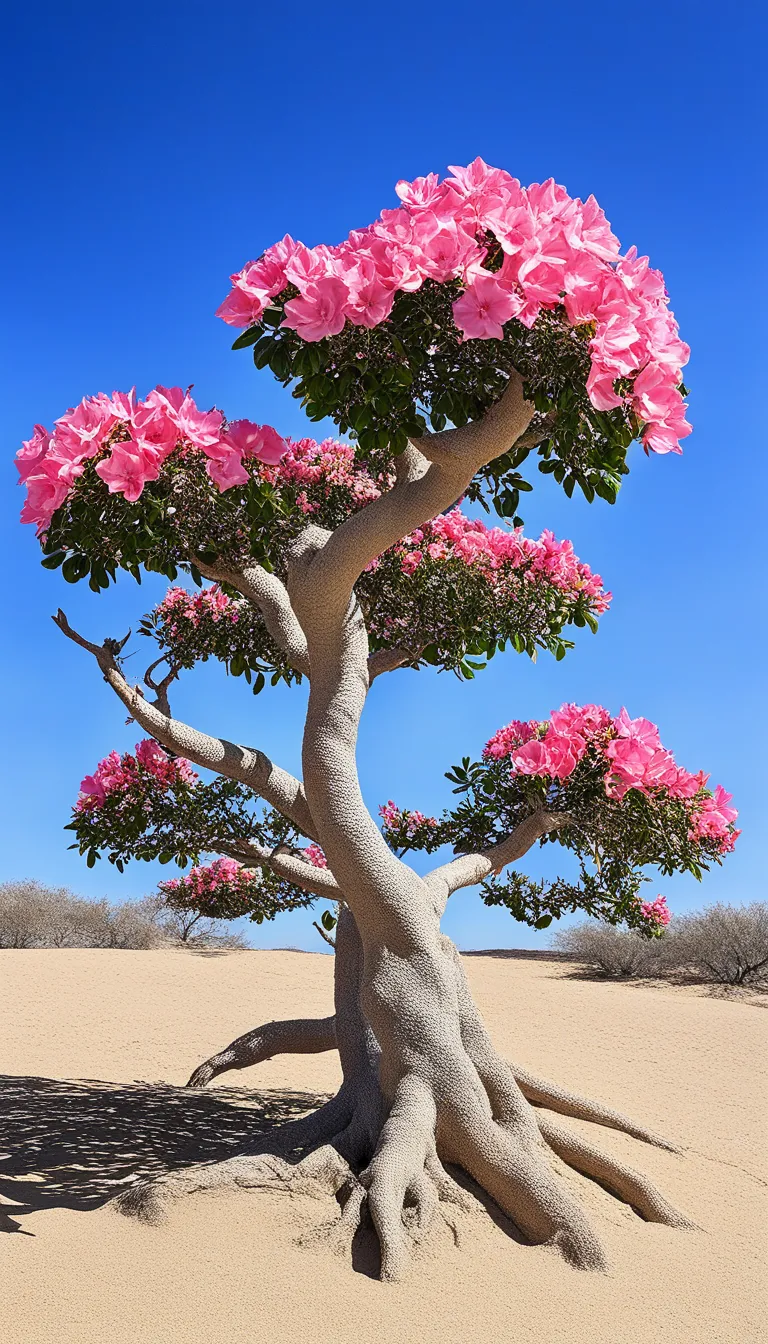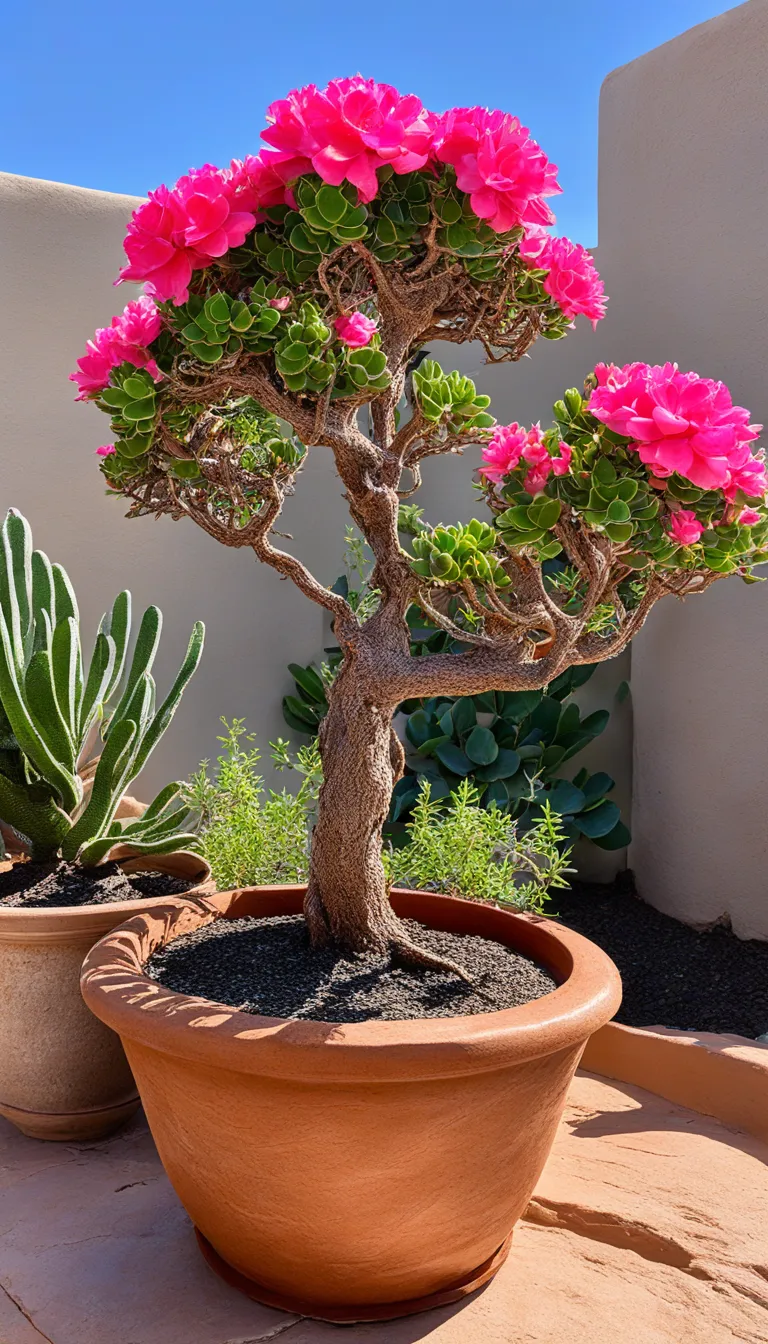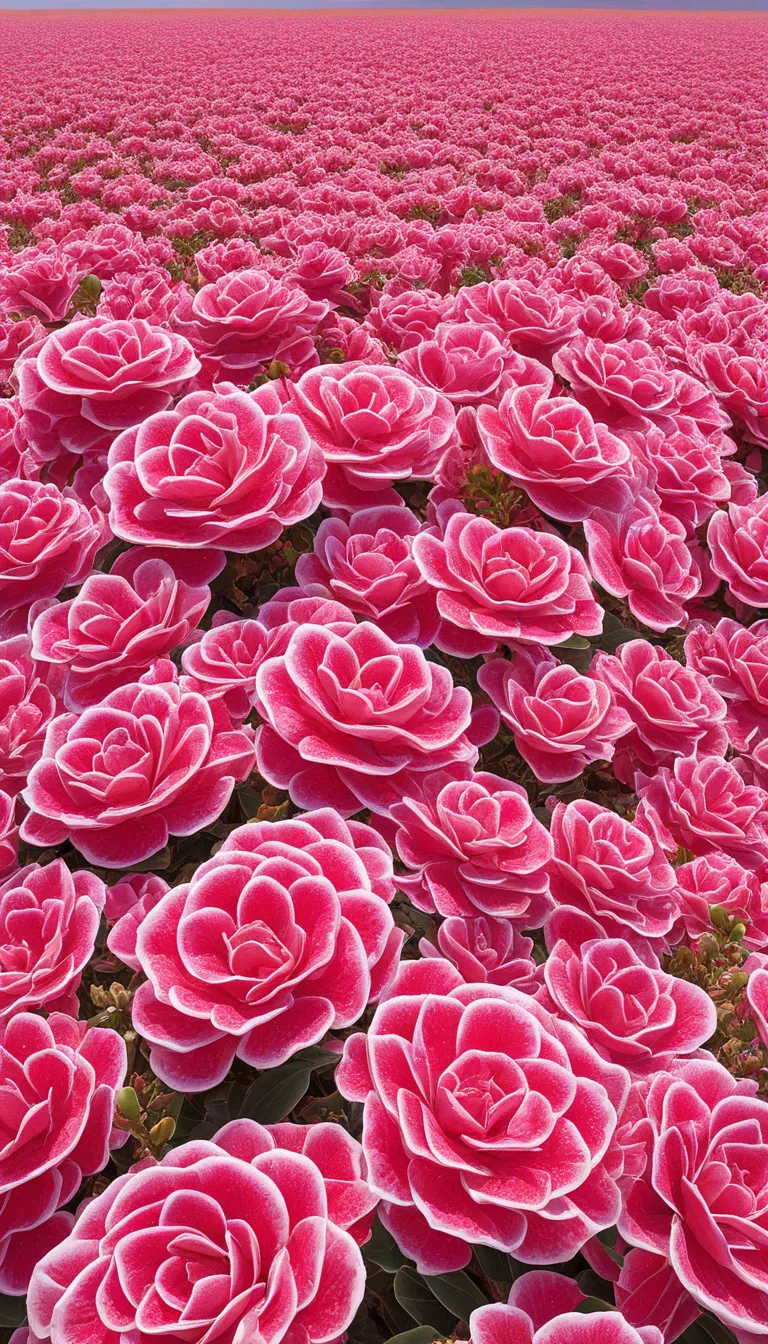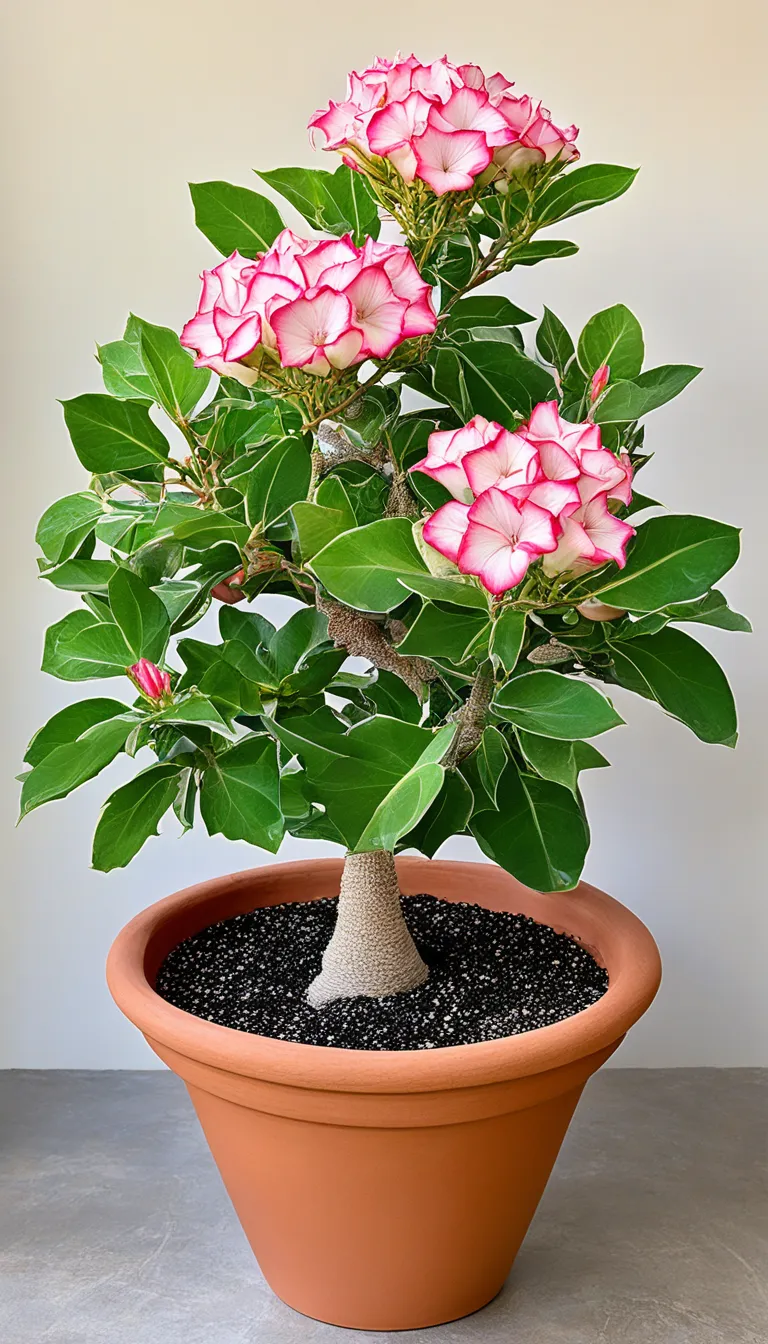This enchanting plant is not only beautiful but also hardy. Explore the Desert Rose’s nature, care, and varieties. The , known scientifically as Adenium obesum, is a striking succulent plant that is revered for its vivid blooms and unique, bulbous stem. Native to the arid regions of Africa and the Arabian Peninsula, it thrives in environments that would be challenging for less resilient plants.
Often mistaken for a bonsai tree due to its sculptural qualities, the Desert Rose can add an exotic touch to any plant collection. Its ability to adapt to indoor environments makes it a popular choice for plant enthusiasts around the world. With a little bit of knowledge and some tender loving care, you can cultivate your own and enjoy its spectacular display of color and form.
But what really captures the heart of gardeners is not just its beauty—it’s the plant’s surprising resilience and ability to explode with flowers even in the most challenging conditions. Ready to dive into the world of the Desert Rose? Let’s get started!

What is Desert Rose?
This enchanting plant is not only beautiful but also hardy. Explore the Desert Rose’s nature, care, and varieties.
The Desert Rose, scientifically known as Adenium obesum, is a striking succulent that flourishes in arid climates. Its swollen, often twisted, stems store water, making it a symbol of resilience and survival. Native to the sub-Saharan regions of Africa and the Arabian Peninsula, this plant has adapted to thrive under the scorching sun and infrequent rainfalls.
With its lush, glossy leaves and trumpet-shaped flowers that burst in a spectacle of colors, the Desert Rose is a favorite among gardeners and plant enthusiasts. But don’t let its delicate appearance fool you; this plant is as tough as they come. It’s no shrinking violet, standing up to the challenges of a harsh environment with a surprising combination of elegance and endurance.
Here are some quick facts to help you get acquainted with the Desert Rose:
- Family: Apocynaceae
- Genus: Adenium
- Blooming Season: Late spring to early autumn
- Flower Colors: Ranges from pinks to reds and even whites
- Life Span: Can live for several decades with proper care
Whether you’re an experienced gardener or a novice looking to add a touch of the exotic to your collection, the Desert Rose is a plant that won’t disappoint. Its ability to explode with vibrant blooms amidst the driest of conditions is nothing short of a surprise, making it a captivating species to observe and nurture.

How to Care for Desert Rose?
Caring for a Desert Rose plant is like nurturing a piece of the arid wilderness right in your own home. It’s not just about keeping the plant alive, but ensuring it explodes with vibrant blooms and maintains its unique, sculptural beauty. Ready for a surprise? With the right care, these plants can live for decades!
First things first, sunlight is the Desert Rose’s best friend. Place your plant in a spot where it can bask in full sun for most of the day. If you’re thinking, “But what about the scorching midday sun?” Fear not! This plant is a sun worshipper and can handle the heat. Just make sure it gets at least 4 to 6 hours of direct sunlight.
When it comes to watering, the Desert Rose prefers a ‘less is more’ approach. Allow the soil to dry out completely between waterings to prevent root rot. Here’s a tip: stick your finger about an inch into the soil; if it’s dry, it’s time to water. Overwatering can be a death sentence for this desert dweller, so err on the side of caution.
Feeding your Desert Rose is like giving it a little boost to show off its best self. Use a balanced, slow-release fertilizer during the growing season, and cut back during the winter months. Remember, this plant is a survivor and doesn’t need to be pampered with too much food.
Here’s a quick care checklist to keep your Desert Rose in tip-top shape:
- Provide full sun for 4-6 hours daily
- Water sparingly and only when soil is completely dry
- Use a well-draining soil mix to prevent root rot
- Fertilize with a balanced fertilizer during the growing season
- Protect from cold temperatures and frost
Follow these simple steps, and you’ll be rewarded with a stunning display of resilience and beauty that is the Desert Rose. Now, who’s ready to watch their desert bloom?

What are the Desert Rose Varieties?
Have you ever wondered about the different faces of the Desert Rose? Each variety is a unique masterpiece, boasting an array of vibrant colors and distinctive shapes. Let’s delve into the world of these captivating varieties.
Firstly, the traditional Desert Rose, or Adenium obesum, is known for its pink and white flowers. But, did you know there’s a whole spectrum waiting to be discovered? From the deep, passionate reds of the ‘Red Evergreen’ to the serene whites of the ‘Iceberg’ variety, there’s a hue for every gardener’s palette.
Moreover, the ‘Black Fire’ variety is a showstopper with its nearly black petals edged in fiery red, while the ‘Golden Carrot’ shines bright with its yellow blossoms. And for those who appreciate the subtler things, the ‘Misty Rose’ presents a delicate blend of soft pink petals with a creamy white center.
Let’s not forget the fascinating forms these plants take. The ‘Dwarf’ varieties fit perfectly in small spaces, whereas the ‘Giant’ ones command attention in any garden setting. To give you a clearer picture, here’s a list of some popular varieties:
- Traditional Pink – The classic pink and white blooms.
- Red Evergreen – Deep red flowers for a touch of drama.
- Iceberg – Pure white blossoms resembling snow.
- Black Fire – Dark petals with a red outline, like embers in the dark.
- Golden Carrot – Bright yellow flowers to light up your garden.
- Misty Rose – Gentle pink with a heart of white.
- Dwarf – Compact plants for the modest space.
- Giant – Large plants that make a bold statement.
Each variety of Desert Rose brings its own explosion of beauty, just waiting to surprise and captivate. Whether you’re a seasoned collector or a budding enthusiast, the diversity of the Desert Rose family promises a perfect match for your garden’s character. So, which variety will you let bloom in your personal oasis?





